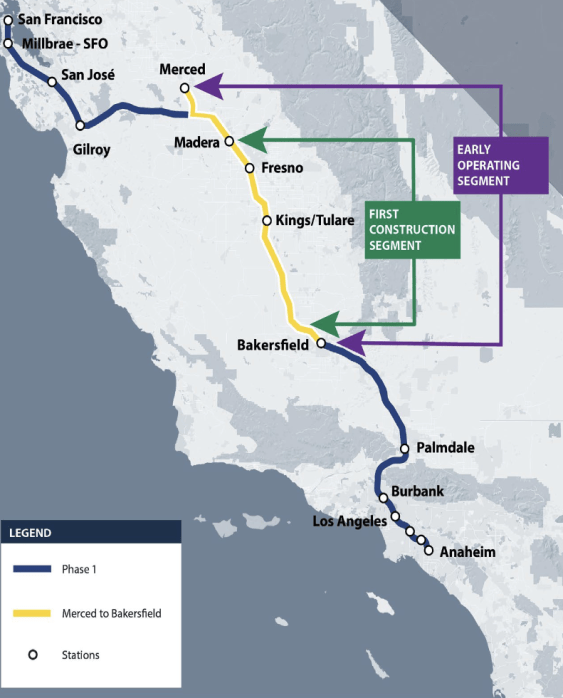CNU Transportation Project Raises Bar on Planning for Livable Cities
5:08 PM PST on November 5, 2009
 Photo: npGreenway
Photo: npGreenwayThe Congress for the New Urbanism's Project for Transportation Reform summit in Portland, Oregon, has brought together transportation engineers, city planners, and transportation reform advocates to share best practice policies for reforming transportation metrics, funding mechanisms, and regional practices that isolate transportation planning from land-use and growth targets. The highlight of the first day of the program was Portland itself, as councilors from Portland Metro, one of the only elected municipal planning organizations (MPOs) in the country, elaborated on their multi-disciplinary mission, which seeks to limit development within an urban growth boundary and coordinate transportation, parks and recreation, and solid waste management to achieve a more sustainable city.
It's quite a mandate, one that Metro's own councilors and representatives reminded the audience was a work in progress. Despite Portland's reputation among new urbanists and livable cities advocates as a national leader in promoting pedestrian safety and multi-modal accessibility, the region's municipal stewards said they have a long way to go.
Metro Councilor Robert Liberty said, "I know this is the image many of you have of our region," while displaying a slide of Dorothy and her cohorts skipping along the yellow-brick road to Oz (Portland's green bike lanes do beg at least a chromatic comparison to the Emerald City). In reality, said Liberty, moving onto a photo of one of Portland's many crisscrossing freeways, the city is still fighting off the influence of Robert Moses (who visited in the 1940s and convinced city leaders they should build bigger and faster roads).
Since 1973, with the passage of Oregon's Senate Bill 100, which led to the original urban growth boundary around Portland, the region has incrementally chipped away at the Moses paradigm of freeway expansion, instead funding light rail, robust bus service, extensive neighborhood traffic calming, and ever more impressive bicycle infrastructure. So thoroughly have Portlanders embraced the bicycle, in fact, St. Stephen's Episcopal Church recently unveiled a new bicycle shrine in its efforts to reach out to cyclists.
 An abandoned spur from the planned Mt. Hood Freeway, plans for which were scrapped after the freeway revolts of the 1960s and 70s. Photo: Matthew Roth
An abandoned spur from the planned Mt. Hood Freeway, plans for which were scrapped after the freeway revolts of the 1960s and 70s. Photo: Matthew RothDespite this effort to moderate the expectations of conference attendees, it was clear twenty minutes into the first presentation that Metro has so thoroughly incorporated new urbanist principles into their lexicon that they are essentially speaking a different language than any other MPO in the country. What's more, they are not merely drafting good plans that collect dust on a shelf, but funding the innovative policies and setting performance targets so the public, which has a remarkable opportunity to give direct feedback via the ballot box, can gauge their successes and failure.
When I asked the city engineer from Milwaukee, Wisconsin, how receptive his peers, their MPO and the state DOT were to principles of network connectivity and human-scale transportation objectives, he gave me a bemused smirk. He explained that his city was moving closer to installing a 2-mile streetcar route, but that most efforts to convince Wisconsin DOT that it should consider transit projects are met with responses like, "we're in the highway business."
Two other conference presentations from the day were particularly interesting, the first from CNU President John Norquist, who explained the efforts his organization has been involved in to build support among fire and emergency service personnel for human-scale streets, traffic calming, and dense development. Norquist said the process has been slow but positive: they are hoping more states will adopt policies similar to Oregon's, where final authorization of traffic calming depends on traffic engineers, not the fire marshal.
The other presentation, by University of Connecticut Engineering Professor Norman Garrick, bolstered Norquist's assertion that dense cities are safer cities, per capita. Garrick presented data from a yet-to-be-released study of cities all over California that measured the impact of street design on a range of safety factors, from emergency response times to bicycle injury collisions and pedestrian fatalities.
Garrick found that cities built on a grid network and cities built before 1950, which tended to have smaller streets not designed primarily for automobility, realized significantly better safety indicators. In grid cities, according to Garrick, one's chance of dying in a car was 50 percent lower than in suburban-style cities (branch street networks) and injury collisions were 30 percent lower in grid cities. People living in grid cities were four times more likely than their suburban counterparts to walk and bike and two-to-three times more likely to take transit.
During the afternoon, attendees broke out into groups to take tours of Portland's various networks, from streetcars, to bicycles, to green streets (my post on the green streets tour will be forthcoming). Today's highlights will be panels on MPO reform and analysis of the VMT reduction benefits of dense development along transit corridors. Tomorrow, attendees will hear from Representative Earl Blumenauer on his national transportation agenda.
You can get updates from the conference on Twitter by searching for #CNUtrans and be sure to check the CNU website for presentations and video.
Stay in touch
Sign up for our free newsletter




